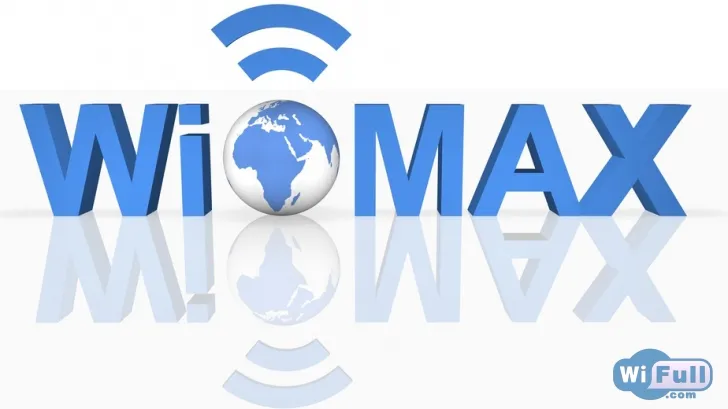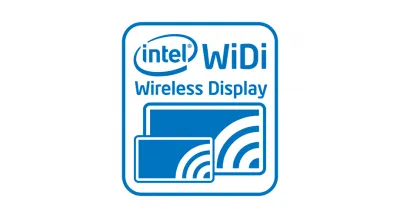WiMAX
The name "WiMAX" was created by WiMAX Forum founded in June 2001 to promote WiMAX technology and its development. The forum describes WiMAX as a "standards based technology providing wireless high speed network access, an alternative to DSL and leased lines. The maximum speed is 1 Gbit/sec per cell.
WiMAX Scope
- Connecting Wi-Fi access points with each other and with other segments of the Internet.
- Providing broadband wireless access as an alternative to DSL and leased lines.
- Providing high-speed data transfer services and telecommunication services.
- Creating non-located access points.
- Creating remote monitoring systems, like in SCADA systems.
WiMAX provides Internet access at high speed with a much larger coverage than that of Wi-Fi networks. This allows to use the technology as a "backbone channels", whose continuation - leased lines and DSL, as well as local networks. This approach finally allows to create the high-speed scalable networks within the cities.
The feasibility of WiMAX as an access technology
The last mile has always been the actual problem of communication workers. Now there are a lot of technologies of the last mile, any telecom operator is facing the problem of technology selection, which would optimally deliver any type of traffic to the subscribers. There is no universal solution to this problem, each technology has its own scope, its own advantages and disadvantages. The choice of a certain technological solution is determined by a number of factors, in particular:- target audience, operator's strategy, services offered now and planned;
- amount of investments into the network development, payback period of those investments,
- the existing network infrastructure, required for its maintenance inoperable condition,
- time, necessary for the network launch and the beginning of service provision.
Each of the factors has its own weight, the choice of a particular technology is made with the consideration of all of them.

Fixed and mobile WiMAX options
The whole WiMAX family has the advantages, but different versions of it are seriously different. Standard developers have looked for the best solutions for both fixed and mobile use, but it has not been possible to combine all the requirements within a single standard. Although some basic requirements are the same, the focus of technology on different market niches led to the creation of two separate versions of the standard (or rather, we can consider them two different standards).Each WiMAX specification defines its own operating frequency ranges, radiation power, bandwidth, transmission and access methods, signal coding, signal modulation, radio frequency reuse principles and other indicators. Therefore, WiMAX systems that are based on the IEEE 802.16 standard, namely its versions e and d, are almost incompatible.
Characteristics of each version are as follows:
- 802.16-2004 (also known as 802.16d). Approved in 2004. Frequency orthogonal multiplexing (OFDM) is used, and there is support for fixed access in areas with or without line-of-sight. The user device is a fixed modem for indoor and outdoor installation, and PCMCIA cards for laptops. In most of the countries under the technology marked bands 5 GHz and 3,5 GHz. According to the WiMAX Forum, there are already 175 implementations of the fixed version. Many analysts see it as a competing or complementary technology to DSL broadband.
- 802.16-2005 (aka 802.16e, mobile WiMAX). Approved in 2005. Is a new round of fixed access technology development. The version is optimized for mobile users and supports a set of specific functions - roaming, handover and idle mode. Scalable OFDM access (SOFDMA) is used, can work with or without line-of-sight. The planned frequency ranges for the Mobile WiMAX networks are 2.3-2.5, 2.5-2.7 and 3.4-3.8 GHz. Today, several pilot projects have been realized in the world, and Skartel was the first to deploy its network in Russia. In Kazakhstan, a project called FlyNet (flynet.kz) was implemented. Competitors of 802.16e are all mobile technologies of the 3rd generation (for example EV-DO and HSDPA).
The main difference between the 2-nd technologies is that the WiMAX fixed serves only "static" subscribers and WiMAX mobile works with the users moving at the speed of maximum 150 km/h. Mobility implies roaming as well as seamless switching between base stations while the subscriber is on the move (similar to cellular networks). In private cases mobile WiMAX can be used to serve fixed users.
Broadband
Many telecommunications companies are making significant bets on the use of WiMAX for high-speed communication services. There's a reason for that.First of all, technology 802.16 is more cost effective (relative to wired technologies) not only to provide new customers access to the network, but also to expand services and cover new territories.
Secondly, in many ways wireless technology is easier to use than traditional wired channels. WiMAX and Wi-Fi networks are easy to deploy and easily scalable as needed. This factor proves useful when you need to deploy a large network in a tight timeframe. For example, WiMAX was used to provide network access to the survivors of the December 2004 tsunami in Indonesia. The entire communications infrastructure of the affected region failed and communication services had to be quickly restored to the entire region.
In total, all these advantages allow to reduce prices for high-speed Internet access for businesses and individuals.
equipment for users
Equipment for WiMAX deliver several manufacturers, it can be installed indoors (devices having the dimensions of a regular DSL-modem) and outdoors. Equipment which is designed for placement indoors and does not require installation skills, of course, more convenient, but it can operate at much shorter distances from the base station than professionally installed external devices. That is why the equipment that is installed indoors needs a lot more investments in network infrastructure because it involves a lot more access points.With the advent of mobile WiMAX an increasing emphasis is placed on the development of mobile devices - special telephone handsets (similar to a conventional mobile smartphone) and computer peripherals (in particular, USB radio modules and PC cards).
Basic concepts
WiMAX networks in general consist of basic parts: base and subscriber stations and equipment. The speed of information exchange can ideally reach 70 Mbit / s, a line of sight between the receiver and base station is not required.Between the base stations are set connections (line of sight) using a frequency range of 10-66 GHz, with a maximum speed of information exchange is 140 Mbit / s. At least one base station in this case is connected to the provider's network, using a classic wired connection. But the more Base Stations are connected to the provider network, the faster the data is transmitted and the higher the overall network reliability.
The structure of IEEE 802.16 networks is similar to the traditional GSM networks (base stations are working at ranges up to tens of kilometers and their installation does not require the construction of towers - they can be installed on house roofs, ensuring the line of sight between the stations).
MAC / channel level
In Wi-Fi networks all the user stations, trying to transmit data through a particular access point (AP), are competing for its "attention". This approach can lead to a situation where the more distant stations are constantly disconnected in favor of the stations that are closer. This situation makes it difficult to use Voice over IP (VoIP) services which are very much dependent on seamless connectivity.With respect to 802.16 networks, MAC uses a scheduling algorithm. Each user station only needs to connect to an access point and a dedicated slot is created for it on the access point which is not available to other users.




